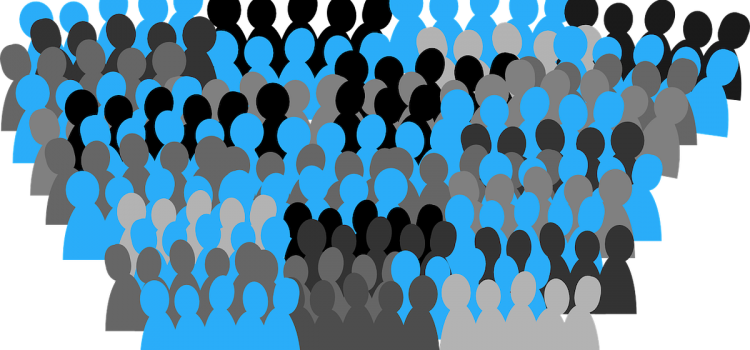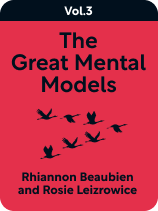

This article is an excerpt from the Shortform book guide to "The Great Mental Models Volume 3" by Rhiannon Beaubien and Rosie Leizrowice. Shortform has the world's best summaries and analyses of books you should be reading.
Like this article? Sign up for a free trial here .
What makes social networking apps and job search websites valuable? What’s needed for societal change? How does churn affect a group?
In the third volume in The Great Mental Models series, Rhiannon Beaubien and Rosie Leizrowice borrow models from systems science and mathematics to build a framework for understanding human behavior and viewing the world more objectively. They discuss three types of group dynamics—network effects, critical mass, and churn—that help us understand how groups create value based on their size, how social change works, and how turnover can both help and hurt a system.
Keep reading to learn how certain models from systems science and mathematics help us understand group dynamics.
Group Dynamics
The systems of feedback loops and algorithms help explain both individual and group behavior. But one of the interesting things about systems is that groups tend to develop behaviors and qualities that aren’t present in any of the individuals that make up the group. We’ll look at three types of group dynamics—network effects, critical mass, and churn.
#1: Network Effects
One way that groups create meaning or value that isn’t present in the individual is through what’s called network effects. The authors explain that network effects happen when something increases in value or utility the more people have it or use it.
For example, a social networking app is valuable only if it has a reasonably large user base. If there are few people on a given app and you don’t know any of them, you’ll have less reason to join than if everyone you know is already on there. Similarly, a job search website is useful only if it has a reasonable number of both employers and job seekers. Without enough of either, the site doesn’t function.
(Shortform note: Network effects are an economic concept used to describe the value of certain types of products or services. But a similar idea also applies to the kinds of social feedback loops and algorithms we discussed earlier. It probably doesn’t make much sense to write a constitution and a complex legal code to govern your household—with a small handful of people, it’s more efficient to deal with rule-breaking situations as they come up than to spend months in formal proceedings over who forgot to rinse the dishes. But when you need to govern hundreds, thousands, or millions of people, it’s worth the time and effort to build and refine an algorithmic system to standardize and automate rule enforcement. As groups grow, so do the algorithmic systems that govern their interactions.)
The authors point out that these network effects form reinforcing feedback loops. In the example of the social networking app, every person who joins will likely influence others to join as well. The more people there are influencing others to join, the more quickly the app’s user base grows. This growth has a limit, though. The authors point out that negative network effects set in when the network hits diminishing returns or when the size of the user base reveals bottlenecks (we’ll look more at both of these phenomena below). In the example of the job search engine, if the platform becomes so popular that every job opening is filled right away, popularity might die off because there won’t be enough job postings available anymore.
(Shortform note: Understanding network effects can help you make better decisions about what products to buy, what services and networks to join, and even how to invest. For example, cryptocurrencies like Bitcoin depend on network effects for their value and utility. Like all currencies, crypto is only worth what people agree it’s worth. So if you’re deciding whether to invest in crypto, you should base a lot of your risk-reward calculations on how likely you think it is that other people will continue to trade the specific currency you’re interested in.)
#2: Critical Mass
Network effects show that you need a certain number of people to make certain products or services worthwhile. A broader version of this principle is the concept of critical mass—the idea that you need a certain number of people to think alike in order to effect social change.
The idea of critical mass comes from nuclear physics, where it describes the minimum amount of a radioactive material needed to cause a nuclear chain reaction. The authors explain that, more generally, a system is said to be critical when it’s right at its tipping point and about to change from one state to another. A little plutonium won’t do much on its own, but get enough together and it becomes less and less stable. Once it’s critical, adding a little more plutonium will start the chain reaction that powers nuclear reactors and nuclear bombs alike.
(Shortform note: The concept of critical mass is also useful when thinking about behavior change. Earlier, we saw how habits are driven by feedback loops. But research suggests that reinforcement only influences habits in their formative stage and that once a habit is established, it continues under its own momentum even when it’s no longer reinforced. In other words, behaviors are subject to their own principle of critical mass, meaning that if you repeat a behavior often enough, it becomes self-sustaining.)
The authors make an analogy between nuclear physics and human societies, arguing that any major social change requires society to first reach a critical mass of public sentiment. They argue that while change often seems to happen suddenly and quickly, it usually requires years of hard work to bring society to a critical point in the first place.
For example, the Civil Rights Act of 1964 marked a major change in American law by outlawing many forms of discrimination. But through the lens of critical mass, the act itself was more of a result of change than a cause of it. The act followed a decade of organized protests, legal challenges, and violent unrest—and this period itself built on a history stretching back more than a hundred years. By the mid-1960s, the United States had reached critical mass when it came to racial injustice.
According to Beaubien and Leizrowice, critical mass is important because it helps you focus your efforts where they’re most needed. If you’re trying to effect change in society—or even in a smaller group—you won’t get very far if you only focus on the moment of change itself because big change is only possible when a system is already critical. By way of analogy, the Civil Rights Act couldn’t have passed in 1954—and it likely couldn’t even have been conceived of in 1864. But even if you’re lobbying for a rules change at work, for example, you’ll probably have more luck if you garner support from your coworkers than if you try to act alone to change things directly.
| How to Build Critical Mass In The Tipping Point, Malcolm Gladwell identifies three factors that determine how quickly an idea reaches critical mass. He argues that you can manipulate these factors to spread an idea more quickly and thereby achieve critical mass—and social change—faster. These three factors are: The fact that some people are more effective at spreading ideas than others. These social superspreaders include people with lots of connections, trusted experts, and people with natural persuasive skills. How sticky the idea is—in other words, how easy it is to understand and remember, and how well it motivates people to act. The idea’s context—the environmental and social factors that determine how receptive people are to the new idea. In particular, Gladwell argues that groups of 150 people or fewer adopt new ideas easily because such groups are large enough for peer pressure to influence members’ thinking but small enough for everyone to reach consensus. Gladwell’s ideas suggest that if you’re working toward social change, you should: Convince influential people to join your cause early on. Make your message clear, catchy, and actionable. Target small groups rather than individuals or large segments of the population. Where possible, change the environment to make your cause more attractive or easier to act on. |
#3: Churn
So far, we’ve been looking at the power of getting more people together and on the same page. But when you’re looking at group dynamics, you also have to think about the rate at which people leave the group. Beaubien and Leizrowice explain that managing churn—the inevitable attrition that happens over time—is key to keeping a group functioning at its best.
The authors explain that churn affects every kind of system. In a physical system such as a car, some parts need to be replaced or replenished regularly (like tires or gasoline) and other parts wear out over time (like the engine or transmission). In a social system, churn is governed by the rate at which new members join a group and the rate at which existing members leave.
In business, churn refers to customer gain vs. retention, and also employee turnover. The authors suggest that, in business contexts, rather than trying to eliminate churn—which requires extreme cult-like methods of control and intimidation—you should find the appropriate level of churn that supports optimal growth. Focusing only on attracting new customers and paying no attention to keeping your existing customers limits growth and wastes resources. But focusing only on customer retention at the expense of bringing in new customers also limits growth.
| Group Dynamics Influence Each Other In order to manage churn, you need to consider how it interacts with the other group dynamics we’ve explored. For example, in The Lean Startup, Eric Ries outlines three approaches to growing your customer base. One method is traditional paid advertisements, but the other two depend on group dynamics: Sticky growth depends on network effects to minimize churn. In sticky growth, a company needs to retain a core set of users so that new users have more incentive to stay—which further increases the incentive for the next batch of new users. This increasing “stickiness” comes from the fact that, as we’ve seen, some products increase in value and usefulness as their user base increases. Viral growth uses the principles of critical mass to mitigate churn. Viral growth happens when a company gets current customers to recruit new customers through referral incentives (like a reward for each friend who signs up) or automated processes (such as sign-up links automatically included in users’ outgoing emails). If you can get a customer to bring in two other customers (and so on), it doesn’t matter if you then lose that first customer—you’ve still grown overall. Similarly, the network effect itself requires a critical mass of users for a product or service to be useful. And if you’re trying to enact change by building a critical mass, you need to pay attention to churn—if you’re losing too many supporters, your cause will never take off. |
The authors argue that, in any social context, churn is necessary for innovation. In academia, for example, new professors bring new theories and new approaches. As their work becomes established and they advance in their careers, they don’t typically move that far from their initial innovations. Instead, the next generation of professors, inspired by and building on (or tearing down) the previous work, are the ones who bring in new ideas and keep the field moving forward.
(Shortform note: When innovation is important, you can intentionally increase churn by imposing term limits. For example, the US military research agency DARPA hires project leaders for only three- to five-year contracts. In doing so, they hope to instill a sense of urgency and to keep new ideas flowing through the organization.)

———End of Preview———
Like what you just read? Read the rest of the world's best book summary and analysis of Rhiannon Beaubien and Rosie Leizrowice's "The Great Mental Models Volume 3" at Shortform .
Here's what you'll find in our full The Great Mental Models Volume 3 summary :
- How to understand anything in the world by learning a finite set of rules and patterns
- A look at how humans are driven by algorithms
- Why you shouldn't be fooled by randomness






